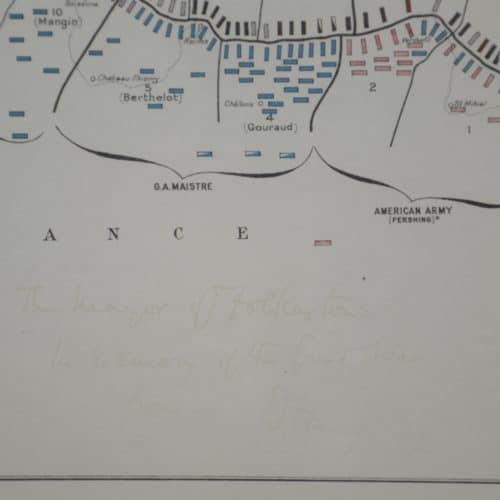WW1 4: Western Front
This is a map of the Western Front showing the situation on 25 September 1918.
The Western Front was a line of trenches from the North Sea to the Alps passing through Northern France and Belgium.
This is where British troops did most of their fighting.
For most of World War 1 it was a horrendous killing ground, with soldiers attacking each other using rifles, machine guns and high explosive shells. The trenches were often filled with thick mud.
Millions of soldiers died or were wounded on both sides, including hundreds of young men from the Folkestone area.
However, by September 1918, things had changed: with superior allied numbers, tanks and and increased firepower, the Germans were in retreat.
Look closely at the map. Can you find the British army units (coloured red) fighting in Belgium (Flanders) and Northern France)?
This map is signed by Field Marshall Douglas Haig.
Field Marshall Sir Douglas Haig was the leader of the British Army.
He was a controversial character.
Many thought his outdated tactics and stubborn refusal to stop attacking against overwhelming odds, were responsible for massive losses of men at the Battle of the Somme in 1916 and the Battle of Ypres in 1917.
However, between August and November 1918, his forces defeated the German Army in the greatest succession of victories in British Army history, leading to the Armistice and Allied victory.
The inscription is written on the map in faded brown ink. It reads:
To the Mayor of Folkestone.
In Memory of The Great War.
From D Haig FM


